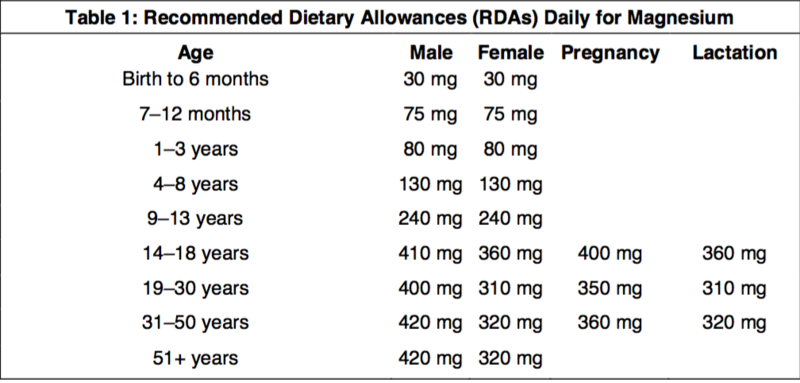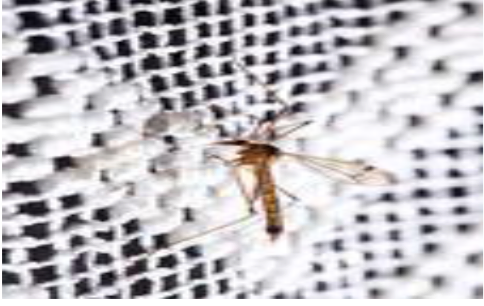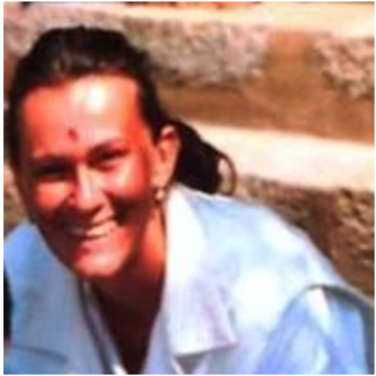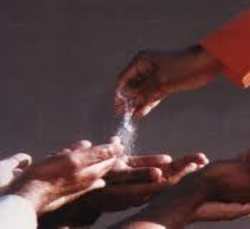In Addition
Vol 5 Issue 4
July/August 2014
Health Tips
Sai Vibrionics offers health information and articles for educational purposes only; this information is not meant as medical advice. Counsel your patients to see their medical doctor about their specific medical condition.
Benefits of the Mineral Magnesium and Its Importance for Your Health
Magnesium, an abundant mineral in the body, is naturally present in many foods, added to other food products, available as a dietary supplement, and present in some medicines (such as antacids and laxatives). Without magnesium we could not produce energy, our muscles would be in a permanent state of contraction, and we could not adjust the levels of cholesterol produced and released into the blood stream.
It is essential for over 300 different chemical reactions in the body, including maintaining your energy level, helping you relax, and sustaining the health of your heart and blood vessels.
Low levels of magnesium in the body have been associated with the development of a number of human illnesses such as asthma, diabetes, and osteoporosis. Taken in the proper amount, magnesium plays a role in preventing both stroke and heart attack.
Magnesium Protects Our DNA
Studies have shown that DNA synthesis is slowed by insufficient magnesium. DNA stability is dependent in part on magnesium. Magnesium not only stabilizes DNA structures, it also functions as a cofactor in the repair of DNA damage by environmental mutagens. Combined with ATP, magnesium also assists in the healthy production of RNA, responsible for ―reading‖ DNA and manufacturing the proteins used in our body.
Magnesium Regulates Our Electrolyte Balance
Magnesium‘s role in the healthy balance (―homeostasis‖) of important minerals such as calcium, sodium and potassium affects the conduction of nerve impulses, muscle contraction, and heart rhythms.
Magnesium for Blood, Heart, and Bones
We often hear about the importance of calcium for bones however, magnesium is the other key mineral for healthy bones. And because so many people take calcium pills without magnesium, there may actually be a greater need for magnesium than for calcium in people who are most vulnerable to osteoporosis.
Magnesium is probably the most important nutrient for the human heart; it helps the heart muscle itself function better. Magnesium also helps protect blood vessels, which is where most of what we call heart disease actually happens. Magnesium is also a natural blood thinner, much like aspirin, so many doctors and researchers believe that it may help prevent heart attacks and strokes.
Magnesium and Diabetes
Diets with higher amounts of magnesium are associated with a significantly lower risk of diabetes, possibly because of the important role of magnesium in glucose metabolism. Hypomagnesaemia might worsen insulin resistance, a condition that often precedes diabetes, or it might be a consequence of insulin resistance. Diabetes leads to increased urinary losses of magnesium, and the subsequent magnesium inadequacy might impair insulin secretion and action, thereby worsening diabetes control.
Symptoms of Magnesium Deficiency
- Joint and muscle pain
- Inflammation
- Loss of appetite or nausea
- Numbness or tingling
- Migraine headaches
- Fatigue
- General weakness
- Osteoporosis
- Fluctuating blood sugar
- High blood pressure
There are also new studies that suggest one of the previously unknown magnesium health benefits is that it affects our mental and emotional state. Those who suffer from depression, insomnia, and general mood swings may see improvement with additional magnesium in their diet. Initial studies have also seen improvement in the rate and severity of panic attacks and anxiety.
Magnesium levels are difficult to track with blood tests since only one percent is found in your blood – another reason that scientists underestimated the importance of getting enough magnesium in your diet. Eating a diet filled with a variety of fresh foods can stop a magnesium deficiency before it starts.
At-Risk Individuals for Magnesium Deficiency
- Those above the age of 55
- Those who regularly consume alcohol, caffeinated beverages or sodas
- Those taking certain medications such as diuretics, heart and asthma medications, birth control pills and/or oestrogen replacement therapy
- Those undergoing significant psychological or physical stress, including surgery, burns and liver disease
- Those suffering from digestive disorders
Foods Highest in Magnesium
1. Bran – rice, wheat or oat
2. Herbs – dried coriander, chives, spearmint, dill, sage and basil
3. Seeds – pumpkin, sunflower, flax and sesame
4. Nuts – almonds, Brazil nuts, almonds, cashews and pine nuts
5. Dark chocolate
Other excellent sources are leafy green vegetables such as spinach and kale, dry beans and whole-grain breads and cereals.
Make sure you are also consuming enough calcium, vitamin D and vitamin K to reap the most benefits of magnesium. A balanced diet and smart sun exposure should be all your body requires.

For serving size for specific foods see the Nutrient Rating Chart.

Sources:
http://ods.od.nih.gov/factsheets/Magnesium-HealthProfessional/
http://www.ancient-minerals.com/magnesium-benefits/what-is-function/
http://www.doctoroz.com/blog/daniel-heller-nd/magnesium-miracle-mineral
http://en.wikipedia.org/wiki/Magnesium
http://undergroundhealthreporter.com/magnesium-health-benefits/#axzz34AqqR6IE
http://www.whfoods.com/genpage.php?tname=nutrient&dbid=75
Dengue Fever, Are You at Risk?

Dengue (pronounced DENG-gey) fever is a painful disease has been around for centuries but began a dramatic upswing in the 1980s. The incidence of dengue has grown dramatically around the world in recent decades. Over 2.5 billion people – over 40% of the world's population – are now at risk from dengue. Here are highlights of what we know about dengue fever.
What is it? Dengue is a flu-like disease caused by any one of four closely related types of dengue viruses carried primarily by female Aedes aegypti mosquitoes, usually found in the tropics and subtropics. The yellow fever mosquito, Aedes aegypti is a mosquito that can spread the dengue fever, chikungunya and yellow fever viruses, and other diseases. The mosquito can be recognized by white markings on legs and a marking in the form of a lyre on the thorax. The mosquito originated in Africa but is now found in tropical and subtropical regions throughout the world.
In the more northern regions, the disease is transmitted by the Asian tiger mosquito, the Aedes albopictus, which can withstand cooler temperatures. It is characterized by its black and white striped legs, and small black and white striped body. It was originally native to the tropical and subtropical areas of Southeast Asia; however, in the past couple of decades this species has invaded many countries throughout the world through the transport of goods and increasing international travel. This mosquito has become a significant pest in many communities because it closely associates with humans (rather than living in wetlands), and typically flies and feeds in the daytime in addition to at dusk and dawn. The insect is called a tiger mosquito because its striped appearance is similar to that of a tiger. Humans can't infect each other — but they can infect mosquitoes, which pass the virus on both to their female offspring and to human bite victims.
Where is it? The infection is most prevalent in South and Central America, where the tropical weather is perfect for mosquitoes, and is a problem as well in Southeast Asia, Africa and the Western Pacific. Cases have also been reported in parts of Europe, Russia and even the U.S., in Florida and near the Mexican border.
What are the symptoms? About half of people infected are asymptomatic (without symptoms) according to the Centres for Disease Control and Prevention, USA. The other half aren't so lucky. Dengue fever is a severe, flu-like illness that affects infants, young children and adults.
Dengue should be suspected when a high fever (40°C/ 104°F) is accompanied by two of the following symptoms: severe headache, pain behind the eyes, muscle and joint pains, nausea, vomiting, swollen glands or rash. It can feel as though your bones are breaking, hence Dengue's alternative name, "Breakbone fever." Symptoms usually last for 2–7 days, after an incubation period of 4 to 10 days after the bite from an infected mosquito.
Severe Dengue is potentially deadly complication due to plasma leaking, fluid accumulation, respiratory distress, severe bleeding, or organ impairment. Warning signs occur 3–7 days after the first symptoms in conjunction with a decrease in temperature (below 38°C/ 100°F) and include: severe abdominal pain, persistent vomiting, rapid breathing, bleeding gums, fatigue, restlessness, blood in vomit. The next 24–48 hours of the critical stage can be lethal; proper medical care is needed to avoid complications and risk of death.
How serious is it? Half a million patients are hospitalized each year, but most people recover after two to seven days. Some develop dengue hemorrhagic fever after the initial fever declines — a more severe form of the illness that can cause organ damage, severe bleeding, dehydration and even death. But with early treatment, the mortality rate for all dengue fever is currently less than 1 of 100 people.
Treatment and cure? Patients are given medication for their symptoms and told to drink lots of water. No cure yet, but researchers are testing vaccines. (Vibrionics practitioners, consult your reference books for the appropriate remedy combo for Dengue fever.)
Can you get it more than once? Once you survive your first dengue infection, you're immune to that particular type of virus — but not to the other three types. Many countries are home to all four types, and someone who is re-infected is more likely to develop extreme symptoms. To make matters worse, mosquitoes that carry dengue can also carry yellow fever and the chikungunya virus; one bite could pass on multiple infections.
What are the current numbers? The World Health Organization estimates 50 million to 100 million infections a year (although a 2013 study suggests the number may be as high as 400 million). In the Americas alone, the annual number of cases has boomed from 520,000 in 2003 to 2.3 million in 2013. Before the World Cup in mid-June 2014, host country Brazil frantically battled the mosquitoes that carry dengue.
Why so high? Blame it, in part, on globalization. Mosquitoes can hide and breed in goods that are traded. An infected traveller can also spread the disease to mosquitoes in a new region. In cities where construction and the lack of piped water leads to standing pools of water, mosquitoes thrive.
How do we stop it? Efforts focus on spraying streets and neighbourhoods with pesticides, genetically modifying mosquitoes and encouraging people to ward off mosquito bites with bug spray, nets and long- sleeved shirts and long pants.
Sources:
www.WBUR.org
http://www.ask.com/wiki/Aedes_aegypti?o=2801&qsrc=999
http://www.ask.com/wiki/Aedes_albopictus?o=2801&qsrc=999
http://www.who.int/mediacentre/factsheets/fs117/en/
Short and Sweet 1


Practitioner 10375 India writes.... Since my childhood, I have always looked at doctors with awe for their service to patients. Though I wanted to be one like them, for reasons best known to the Lord, I digressed into engineering field to become a Software Engineer.
Many years later when I got a chance to learn Reiki, the Lord gave me an introduction to alternative therapies and their practice. Later, when there was an announcement for the first Vibro Workshop in Pune in Dec 2008, I rushed to enrol and completed the AVP course. Within 9 months, I was able to finish my JVP course and did my SVP course in 2013. Practising Vibro therapy gave a new direction to my life and interacting with patients each time is both a humbling and a great learning experience. It is very humbling when they come back to thank or pay tribute to the ̳miracle‘ named ̳Your Baba medicine‘! I enjoy taking patients‘ calls, hearing patiently to their problems, being their confidante, attending medical camps and giving remedies. Each time when analysing a patient‘s problems or ailment, understanding the root cause is a great learning process. I have noticed that this process is bringing about a lot of subtle changes in me automatically without my putting in any effort.
With SRHVP, I am getting to understand the power of each card and broadcasting itself. When I prepare a remedy with the SRHVP in front of patients, they are very happy and satisfied that there is actually no chemical or drug but only vibrations in the remedy.
These are some of the things I learnt:
-
The biggest learning from my 5 1⁄2 -year Vibro Sadhana is that prayers to Swami with a loving heart are very important and are pure magic.
-
While giving remedies, I have found that giving the remedy SM39 Tension for chronic cases is working wonders. I have tested it on myself and found a lot of difference in my disposition. Many patients have also reported that while the ailment is cured, with this remedy additionally there is lightness in their mind, they are more confident, they are more forgiving, a better person etc. Actually such feedback is the most fulfilling part of Vibro practice showing how much Swami is transforming each individual.
-
Giving a patient a hearing, investing a lot of time and talking to a patient lovingly creates a lot of impact and confidence in the patient‘s heart, and many times patients acknowledge that half their problems are already solved through this!
-
While interacting with the patients, the counselling faculty, which was dormant and unknown to me, unfolded. Such is the grace of Swami. Also, Swami has fulfilled my dream of service to patients although I am not qualified medically!
Swami has given me an opportunity to serve 4200 patients to date. Serving them is a great sadhana in itself which is bringing in a lot of subtle changes in me.
 Practitioner01626…Greece writes: My mother didn’t believe in the power of Vibrionics. When she was 79 years old, one evening after 9 pm, she got a toothache. Urgent intervention was out of the question because she had an artificial heart valve. For a tooth extraction, she would need to undergo a 3-day preparation before the procedure. I brought her Vibrionics pills for toothache with CC11.6 Tooth infections and made her take a dose every 15 minutes. Soon the toothache vanished, and within a few days, the inflammation was gone too. She didn’t even go to the dentist.
Practitioner01626…Greece writes: My mother didn’t believe in the power of Vibrionics. When she was 79 years old, one evening after 9 pm, she got a toothache. Urgent intervention was out of the question because she had an artificial heart valve. For a tooth extraction, she would need to undergo a 3-day preparation before the procedure. I brought her Vibrionics pills for toothache with CC11.6 Tooth infections and made her take a dose every 15 minutes. Soon the toothache vanished, and within a few days, the inflammation was gone too. She didn’t even go to the dentist.
My mother was surprised and elated. After that, she took regular Vibrionics treatment for everything she needed, and even recommended it to everyone.
After some time, she developed heart problems and stayed in the hospital, where she got into a difficult condition. When she came home, she was totally disoriented and could not open her eyes. For a whole month I faithfully gave her CC7.1 Eye tonic + SR291 Gelsemium + SR359 Zincum Met…TDS. To everyone’s astonishment, she was able to see and get out of bed. My family all felt this was a miracle. They no longer considered me a freak who was giving out small white pills, but now regard my Vibrionics work with respect.


Practitioner 03101...Greece as reported by Practitioner 01626...Greece
Practitioner, as a patient, had broken her leg before she was to attend the Vibrionics seminar in Greece to become a junior practitioner. During the seminar she was silently thinking that because she couldn‘t move normally, her Sai Vibrionics seva would be very limited, perhaps nothing. But Swami had other plans. The very first morning she brought the miraculous 108 Combos box home, she found her mother-in-law lying on the floor vomiting, her face pale and greenish, looking terribly exhausted. Her mother-in-law had come over to help Marilena with her leg. But because of diarrhoea and vomiting all night, she had lost a lot of fluid and had passed out on the floor. Marilena put a drop each of CC4.8 Gastroenteritis and CC10.1 Emergencies in 200 ml water, shook it well, and administered this to her mother-in-law. She repeated this, and then had her take the combo 6TD that day, next day TDS, and then OD until she was perfectly well. Also, 2 hours after the fall, her mother-in-law realized that she had a pain in her chest caused by an injury during the fall. This was completed cured after taking CC10.1 Emergencies + CC20.7 Fractures...TDS for about a week.
This was the practitioner‘s first experience with Sai Vibrionics healing and a vivid proof to her mistrustful mind of how useful and successful Vibrionics can be in every situation.
Short and Sweet 2
“OM Relief” Chanting a mantra might reduce inflammation. In a small 2012 study at the University of California, LA, published in Psychoneuroendocrinology, half of a group of 45 caregivers for people with dementia practiced a 12-minute daily meditative chant for eight weeks. The other half listened to a relaxation CD for 12 minutes. Blood tests showed reduced markers for inflammation in the meditation group.
Om Sai Ram

